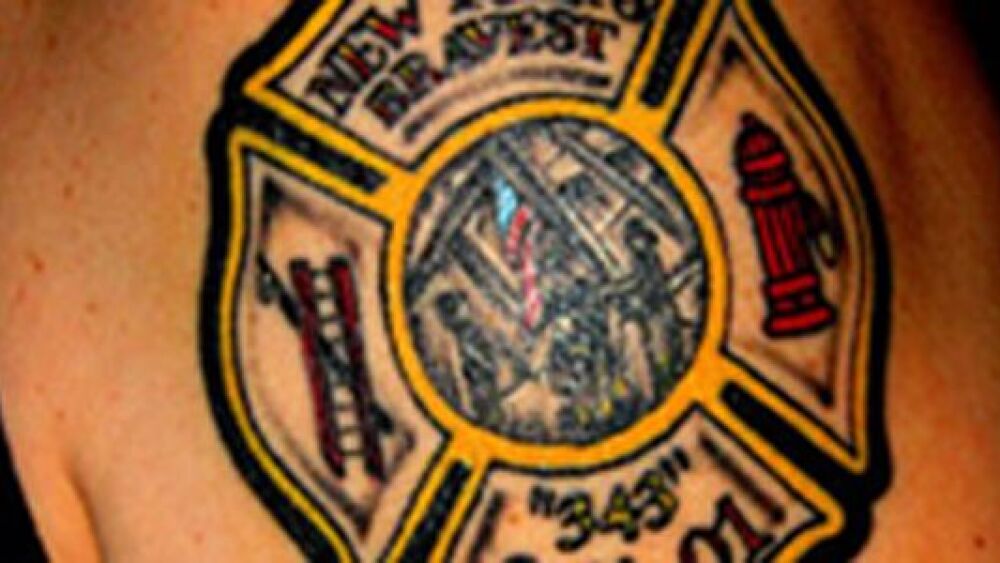Maintaining professional grooming standards on a fire department is a constant challenge for chiefs, especially in 2014.
Are tattoos acceptable, and if so, what kind and how many? Should jewelry be allowed with a uniform? What can a department say about hairstyles? And then there is the ongoing debate about mustaches, sideburns and beards.
The Army recently developed new standards for personal grooming and appearance among its ranks. Specifically, it sets strict limits on the size and number of tattoos a soldier may have that are visible when one is dressed in physical fitness attire — shorts and T-shirt.
Sleeving tattoos on legs or arms are not permitted and no tattoos are permitted on the hands. This new regulation is in addition to the existing standard that no visible tattoos are permitted on the neck or face, and all tattoos must conform to the Army’s anti-discrimination policy in their content.
Current soldiers with existing non-conforming tattoos will be grandfathered in, but promotional opportunities may be limited for them.
Changing opinions
The new Army grooming policy goes far beyond just tattoos. It also addresses hairstyles for men and women, facial hair and what accessories may be used with uniforms. According to Sgt. Maj. Raymond F. Chandler III, the reason for the changes is, “The Army is a profession, and one of the ways our leaders and the American public measure our professionalism is by our appearance.”
There has been significant backlash against the new standards. At least one lawsuit has been filed by a National Guard soldier who has claimed that the new policy barred him from getting a deserved promotion based on his tattoos.
According to a national Harris Poll done in 2012, nearly 25 percent of all Americans have at least one tattoo, and for those between the ages of 30 to 39, that figure was 40 percent.
The same poll stated that 75 percent of respondents said that a visible tattoo had little or no effect on how they felt about someone. The poll did not include people under the age of 18, but it is clear that many young people are getting tattoos that will effectively eliminate them from military service later on.
Hairy situation
As for the hair standards, African-American women are especially concerned that the new policy targets them and hairstyles such as twists and cornrows that are mostly suited to their hair. By the end of April, over 17,000 people had signed a petition to get the standard rescinded.
Establishing a reasonable grooming standard for any profession is more challenging in 2014 than it was even a few decades ago. The workforce is more diverse than it was 30 years ago, and societal expectations about what constitutes a professional appearance have changed.
Civilian fire departments are subject to more laws and requirements under Title VII of the 1964 Civil Rights Act than apply to the armed forces.
Specifically, new guidelines have recently been issued by the EEOC regarding religious attire or appearance and Title VII workplace protections. The EEOC has released guidelines that state that employers must accommodate a wide range of religious dress and grooming practices unless doing so imposes an undue hardship on the business or organization.
Religious freedom
These guidelines apply not only to mainstream religions, but also to practices that are new, uncommon and non-theistic, as long as the practitioner’s beliefs are “sincerely held.”
In addition to the “undue hardship” exemption, for which a fairly high standard exists, exceptions may also be made for safety and health reasons. This has historically been the reason given for widespread policies banning any beards for firefighters — that such facial hair would interfere with getting a complete seal with an SCBA.
Some men wear beards for religious reasons. According to the new EEOC guidelines, there is additional burden now on employers to support any policy that forbids beards based on appearance, if those beards are worn for religious reasons.
Likewise, a religious tattoo might fall under these new guidelines beyond a department’s overall policy.
Balanced approach
These are confusing times for fire chiefs when it comes to personal grooming standards. Managers must balance their personal vision of traditional professional appearance with the new realities.
As fire departments seek to accommodate religious practice, they may be under pressure to make any accommodating policy available to the workforce overall.
A good way to begin the process of developing a grooming standard is to have the conversation about these issues openly, including everyone. It can also help to reinforce the importance of professionalism in a general sense prior to dealing with details about body art or hairstyles.
Be aware that some conflicts that are superficially about grooming issues may be masking deeper issues within the department that need to be addressed.
The best outcome will be that an open, inclusive conversation can create wide buy-in for any resulting policy. However, if a serious dispute arises, fire chiefs may want to consult with others such as human resources or even legal counsel in resolving that conflict.













